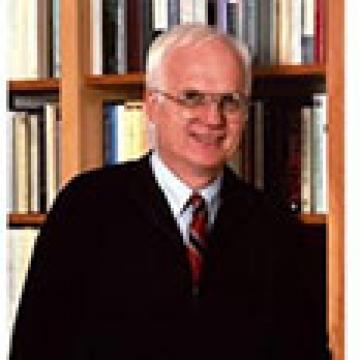William McKinley: The American Franchise
According to the Bureau of the Census, the nation's population reached 72.2 million in 1897. Three years later, the census showed the population divided between 38.8 million men and 37.2 million women. It also reported 66.9 million whites; 9.2 million blacks; 238,196 American Indians; 24,326 Japanese; and 89,863 Chinese in the nation. The majority of Americans (47.4 million) lived in the northeastern and north central areas of the country. The South's population stood at 24.5 million. The West contained a much smaller population of 4.1 million.
Urban Growth
Although more people (45.8 million) still lived on farms and in rural settings in 1900 than in urban areas (30.2 million), urban population increases from 1890 to 1900 were far greater than those in rural areas—a 38 percent increase compared to 11 percent, respectively. The number of individuals in cities of 1 million or more reached 6.4 million: New York (3.4 million), Chicago (1.7 million), and Philadelphia (1.3 million).
Transportation
Most of these Americans, even the rural dwellers, were tied together as never before by railroads, the telegraph, rural postal delivery service, and even the telephone. Railroads carried 501 million passengers a year over 245,334 miles of track. A large percentage of these travelers were salesmen and manufacturing representatives. Countless others were European immigrants who traveled on trains from eastern port cities to work in midwestern meat-packing houses and the interior flour mills. Texas longhorn cattle were butchered in Chicago and transported in refrigerated railcars to wholesalers in New York, Philadelphia, Boston, and hundreds of other urban centers around the nation.
Women's Political Movement
During the 1890s, hundreds of thousands of women joined local women's clubs, self-help organizations, and public associations. Thirty-nine percent of all college students were women (85,400) in 1900, and nearly 25,000 women attended all-female colleges. Many of these club women and college graduates joined the chorus for progressive reforms that included women's suffrage, prohibition, child labor laws, municipal ownership of urban public service industries (gas and water), and other social justice issues.
This new activism of American women began to pay political dividends in the 1890s, particularly with regard to suffrage. Elizabeth Cady Stanton and Susan B. Anthony, leading American suffragists, formed a new organization in 1890, the National American Woman Suffrage Association (NAWSA), to spearhead the drive to give women the vote. NAWSA articulated a new argument for suffrage, one that downplayed equality in favor of regarding women as different from men. Women, NAWSA claimed, possessed a moral sense and a nurturing quality that would introduce—when they were granted suffrage—an element of virtue and compassion into politics. While NAWSA failed more than it succeeded in the 1890s, suffragists could point to some successes, especially in the western United States. Wyoming (1890), Colorado (1893), Idaho (1896), and Utah (1896) each gave women the right to vote, although these advances resulted from each state's particular political circumstances rather than the power of the suffragist movement.
Employment and Economics
In 1900, more than 29 million Americans made up the U.S. work force, representing 38 percent of the total population of nearly 76 million people. Most of these workers tilled the land as farmers or hired farm laborers (between 11 to 13 million) while nearly 5 million Americans worked in manufacturing industries. Construction and transportation employed over 3 million workers while another 2 million worked in the trade, finance, and real estate. Four million Americans held down service jobs as clerks, sales representatives, telephone operators, secretaries, etc., and a little over 300,000 Americans worked for the government, principally at the state and local levels. Those without work, the unemployed, numbered nearly 2 million people.
Workers labored, on the average, around fifty-nine hours a week in the non-agricultural sectors of the economy. Average annual income for all professions in 1897 was $411, and a family of five needed $500 per year to achieve subsistence. Nearly 2 million children were employed in some form of work in 1900. When Andrew Carnegie sold his Carnegie Steel Mills to a syndicate of investment bankers and corporate industrialists, he pocketed $500 million dollars—equivalent in 1999 prices to over $50 billion.
Status of African Americans
Black Americans experienced another decade of disfranchisement, dislocation, and dismay in the 1890s. African Americans remained a predominantly rural and southern people; however, nearly 200,000 blacks left the rural South for the North and West between 1890 and 1910. Every southern state passed Jim Crow laws in the 1890s, which legalized the rigid separation of black and white races. During the 1890s, well more than 100 blacks were lynched each year, a horrible testimony to the power of white racism at the dawn of the new century.
Suffrage Movement
Voter participation peaked in the election of 1896 at around 80 percent of the eligible voters in non-southern states. Thereafter, voter participation in non-southern states began a steady drop from 74 percent in 1900 to less than 60 percent in 1920. Much of the decline stemmed from intensified restrictions on the franchise. In the 1880s, eighteen states allowed immigrants to vote without first becoming citizens. By 1912, only seven states—all with small immigrant populations—still allowed alien suffrage. Also, virtually every state passed some form of personal registration law between 1890 and 1920, often requiring personal registration and proper identification, a period of residency, intervals between registration and voting, literacy tests, property qualification, and poll taxes.
These registration laws kept many recent immigrants and working-class citizens from the polls in non-southern states. In the South, African American voting participation suffered terribly as literacy tests, poll taxes, and property qualifications as well as threats of violence disfranchised black voters. A combination of northern progressives—including leading women suffragettes who opposed machine politics—and white racists in the South supported these measures that limited the franchise of blacks, workers, and recent immigrants.
